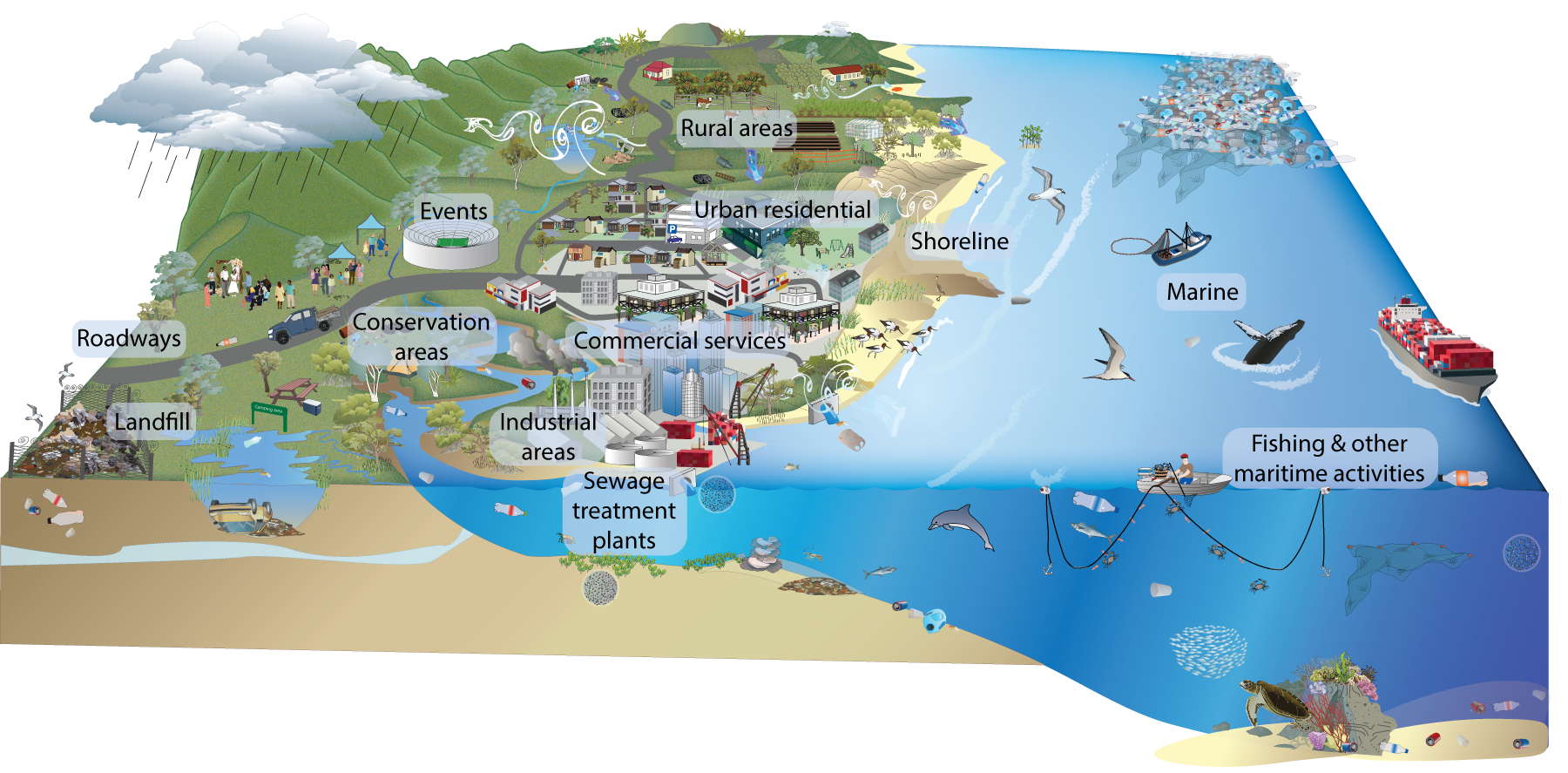|
|
SourcesSources are the places where waste enters the environment. They occur across all sectors and regions of the state. The extent of waste entering the environment varies significantly between land uses, with high density areas such as shopping centres generating greater amounts of waste than rural areas. Sources of waste pollution may be very close to the area where they impact the environment, or the waste may travel great distances using ‘pathways’[1]. Quick facts

Some land uses have been identified as significant sources of waste pollution: The landuse categories used are:
For the purposes of the (LIDMF), the location of sources of waste have been categorised and aligned to the existing land use mapping, Queensland Land Use Mapping Program (QLUMP). References
Last updated: 11 January 2021 This page should be cited as: Department of Environment, Science and Innovation, Queensland (2021) Sources, WetlandInfo website, accessed 8 May 2025. Available at: https://wetlandinfo.des.qld.gov.au/wetlands/management/pressures/litter-illegal-dumping/sources/ |

 — Department of the Environment, Tourism, Science and Innovation
— Department of the Environment, Tourism, Science and Innovation


